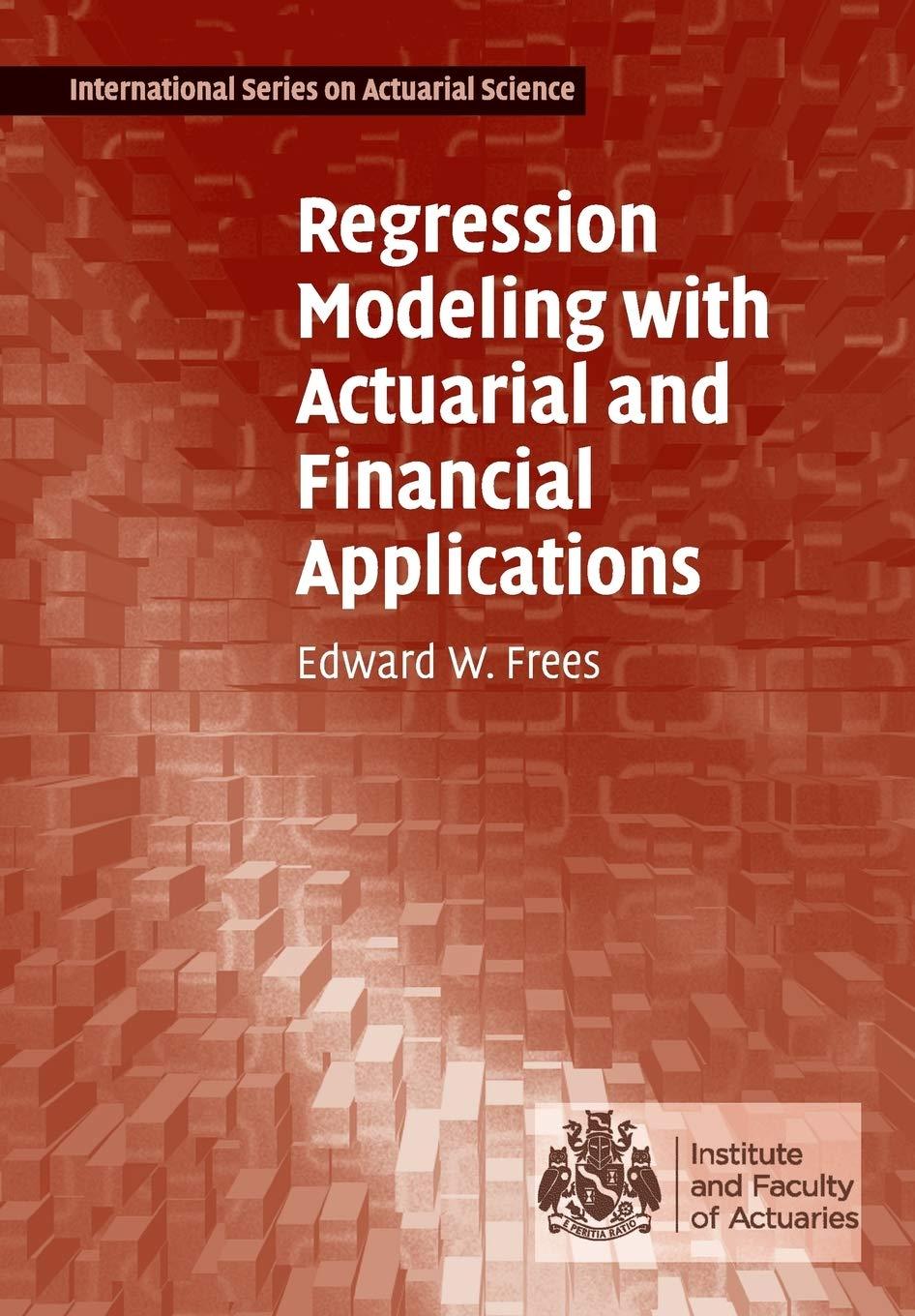This exercise considers data from the Medical Expenditure Panel Survey (MEPS) described in Exercise 1.1 and Section
Question:
This exercise considers data from the Medical Expenditure Panel Survey (MEPS) described in Exercise 1.1 and Section 11.4. Our dependent variable consists of the number of outpatient (COUNTOP) visits. For MEPS, outpatient events include hospital outpatient department visits, office-based provider visits, and emergency room visits excluding dental services. (Dental services, compared to other types of health care services, are more predictable and occur on a more regular basis.) Hospital stays with the same date of admission and discharge, known as zero-night stays, were also included in outpatient counts and expenditures. (Payments associated with emergency room visits that immediately preceded an inpatient stay were included in the inpatient expenditures. Prescribed medicines that can be linked to hospital admissions were included in inpatient expenditures, not outpatient utilization.) Consider the explanatory variables described in Sectionn11.4.
a. Provide a table of counts, a histogram, and summary statistics of COUNTOP. Note the shape of the distribution and the relationship between the sample mean and sample variance.
b. Create tables of means of COUNTOP by level of GENDER, ethnicity, region, education, self-rated physical health, self-rated mental health, activity limitation, income, and insurance. Do the tables suggest that the explanatory variables have an impact on COUNTOP?
c. As a baseline, estimate a Poisson model without any explanatory variables and calculate a Pearson's chi-square statistic for goodness of fit (at the individual level).
d. Estimate a Poisson model using the explanatory variables in part (b).
d(i). Comment briefly on the statistical significance of each variable.
d(ii). Provide an interpretation for the GENDER coefficient.
d(iii). Calculate a (individual-level) Pearson's chi-square statistic for goodness of fit. Compare this to the one in part (b). On the basis of this statistic and the statistical significance of coefficients discussed in part d(i), which model do you prefer?
d(iv). Reestimate the model using the quasi-likelihood estimator of the dispersion parameter. How have your comments in part d(i) changed?
e. Estimate a negative binomial model using the explanatory variables in part (d).
e(i). Comment briefly on the statistical significance of each variable.
e(ii). Calculate a (individual-level) Pearson's chi-square statistic for goodness of fit. Compare this to the ones in parts (b) and (d). Which model do you prefer? Also cite the AIC statistic in your comparison.
e(iii). Reestimate the model, dropping the factor income. Use the likelihood ratio test to say whether income is a statistically significant factor.
f. As a robustness check, estimate a logistic regression model using the explanatory variables in part (d). Do the signs and significance of the coefficients of this model fit give the same interpretation as with the negative binomial model in part (e)?
Step by Step Answer:

Regression Modeling With Actuarial And Financial Applications
ISBN: 9780521135962
1st Edition
Authors: Edward W. Frees





